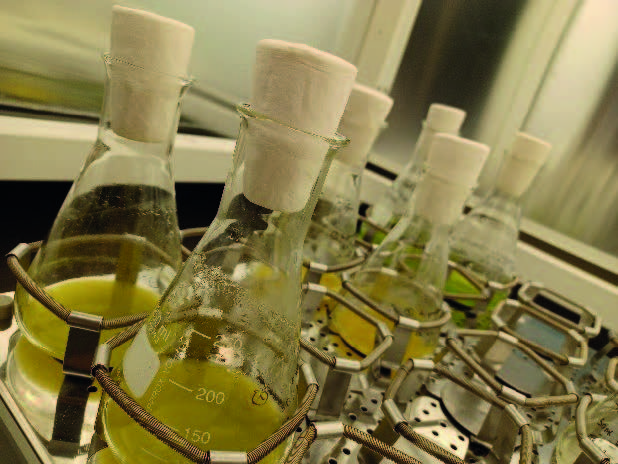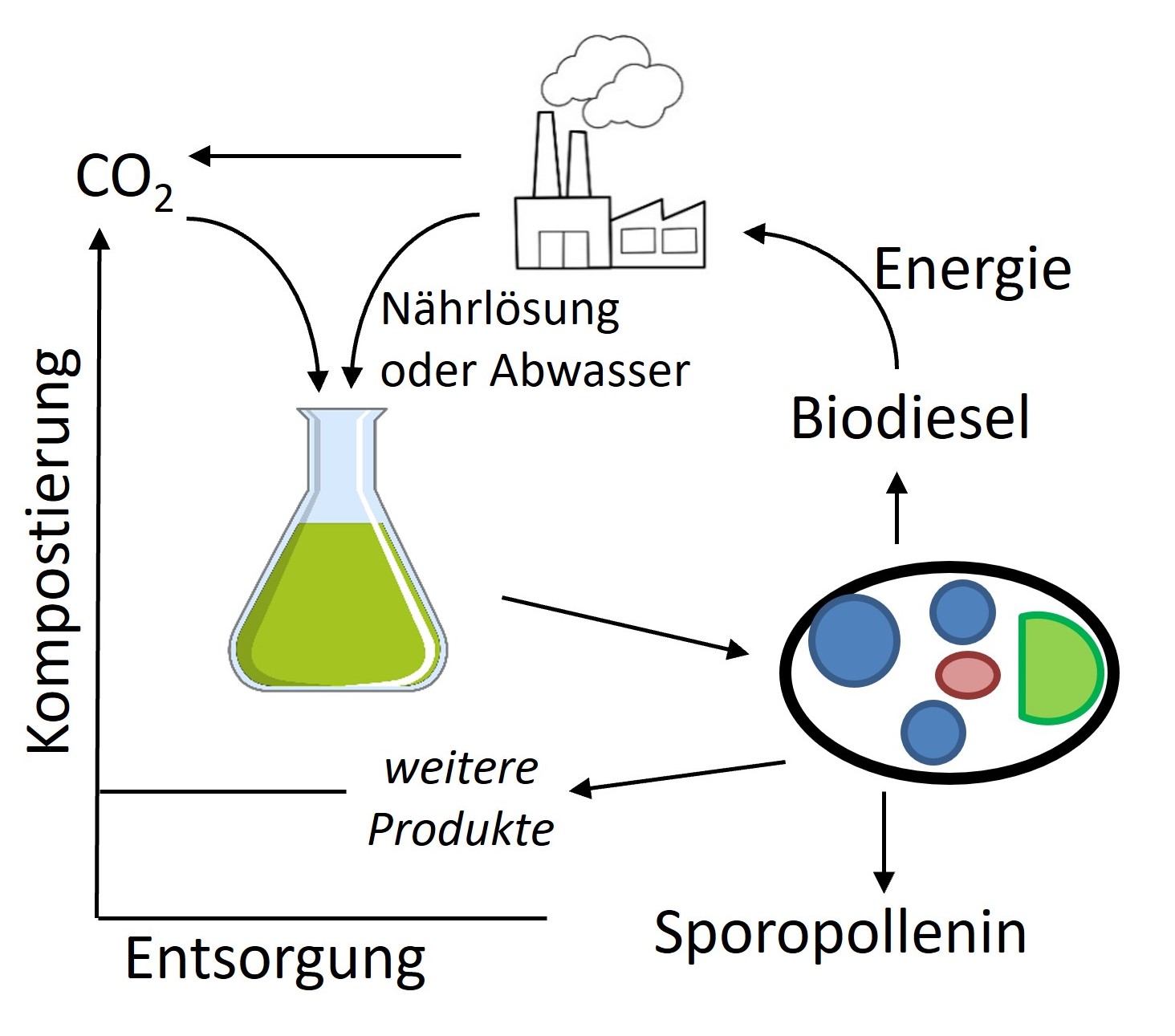Membrane Biophysics

bio3MET: bioMATERIAL – bioENGINEERING – bioTECHNOLOGY
In this applied research project we investigate the use of microalgae for production of GREEN CHEMICALS, fixation of CO2 or production of new bio-polymers like sporopollenin. Microalgae are easily cultivated in synthetic media but also grow in media composed of carbon and nitrogen sources originating from waste products. These algae grow on straw, wood, whey, draff or any other organic waste material and thus, provide a cheap biomass for renewable raw but also high value materials for the chemical industry by simultaneously fixing atmospheric carbon dioxide: a jack of all trades device! Scientific research on these algaes will reveal more and more ways of economic use.
Growing microalage
Algal culture
Algae, especially microalgae can be found almost everywhere in the world. They are not restricted to oceans, lakes and other water areas but can live also in dry places if humidity is provided from time to time. Although autotrophic, single- celled microalgae live on a frugal diet of light, CO2 and water with a few salts, they quickly adapt their metabolism and other cell components to various environmental conditions, thus producing a high variety of chemical compounds like vitamins. So far, microalgae are mainly used as dietary supplements in human nutrition but their contribution in green production processes is almost unlimited: microalgae cultivation is simple and can be integrated into most manufacturing processes. It’s low cost, it is binding more CO2 per volume than trees and it transforms waste products from other manufacturing processes into valuable chemicals like biodiesel, cellulose, sporopollenin or even pharmaceutics.

GREEN CIRCULAR ECONOMY
Circular process with algae
Microalgae cultures can be easily integrated in most production processes especially in companies with a high CO2 output they reduce the CO2 footprint of the product, can filter waste waters and generate valuable raw material by themselves.






